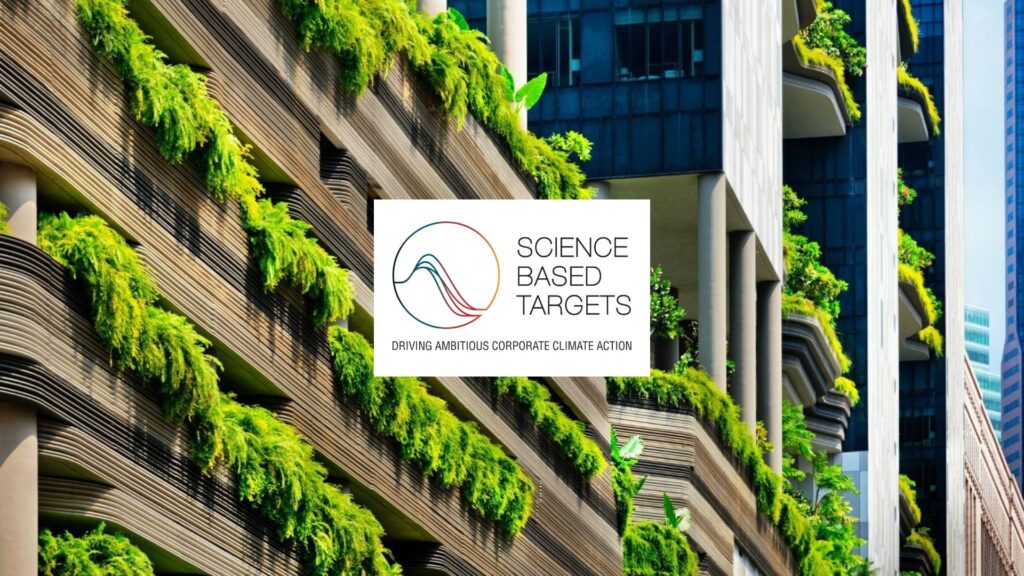SBTi Updates Criteria to Boost Financial Institutions’ Climate Goals to 1.5°C Ambition

The SBTi releases revisions and new resources to enable financial institutions to set ambitious near-term emission reduction targets.
The Science Based Targets initiative (SBTi) is unveiling a suite of revisions and new resources to enable financial institutions (FIs) to set ambitious near-term emission reduction targets. The changes include an increase in ambition to 1.5°C, the introduction of fossil fuel finance criteria and overall improvements for usability and clarity.
The primary resource released is the Financial Institutions’ Near-Term Criteria Version 2.0 (FINT Criteria V2). A more detailed overview of the changes is in Table 2. At a high-level, the updated criteria aim to:
- Align criteria with the SBTi Corporate Net-Zero Standard, notably by increasing minimum scope 1 and 2 mitigation ambition from well-below 2°C to 1.5°C.
- Enhance clarity, actionability and usability regarding existing criteria.
- Streamline coverage requirements.
- Introduce criteria for the new Fossil Fuel Finance Targets method option to disclose, halt, transition and phase out FIs’ fossil fuel–related activities.
FINT Criteria V2 will come into effect as of 30 November 2024. All FIs that submit targets before this date can choose to be assessed against either FINT Criteria V2 or the Criteria and Recommendations for Financial Institutions Version 1.1. FIs that have SBTi-validated targets must update their targets against the latest criteria within five years from their validation date (the validation date can be found on the SBTi Target Dashboard). Table 1 lists each of the updated resources:
| Resource | Description |
| Financial Institutions’ Near-Term Criteria Version 2.0 (FINT Criteria V2) | Provides criteria and recommendations for FIs to set near-term targets on their operations and portfolios in line with the temperature goals of the Paris Agreement. |
| Main Changes Document | Briefly describes the development process for the FINT Criteria V2 updates.Outlines the main issues and concerns raised during the process, and how these have been addressed.Summarizes the key FINT Criteria V2 revisions. |
| Criteria Assessment Indicators for FINT Criteria V2 | Outlines the major checks conducted during the validation process to assess conformance with FINT Criteria V2. |
| Target Submission Form for Financial Institutions Version 2.0 | Form that must be filled out by FIs that wish to submit targets under FINT Criteria V2 to be evaluated by the SBTi.The form will be finalized and published in the coming days. |
| Financial Sector Near-Term Science-Based Targets Explanatory Document | Accompanying informational document relating to FINT Criteria V2 with additional details on target setting (e.g., methods, tools, case studies). |
Table 2 below provides a summary of the key changes made in FINT Criteria V2 compared to Version 1.1:
| Key Changes in FINT Criteria V2 (vs. Version 1.1) |
| FI-C10 (formerly FI-C6):Reduced the scope 1 and 2 target time frame from 5-15 years to 5-10 years. |
| FI-C12 (formerly FI-C8 and FI-C9):Increased the minimum scope 1 and 2 target ambition from well-below 2°C to 1.5°C alignment. |
| FI-C15 (formerly FI-C16):Added a 67% coverage floor requirement, in addition to the more detailed coverage requirements outlined in Table 1.Added a 5% materiality exclusion option under certain conditions.Provided a description of discretionary, advisory and execution-only mandates for FIs to align how they categorize their asset management businesses. |
| FI-C16:Clarified that base year and forward-looking ambition criteria also apply to scope 3. |
| FI-C17.1:Increased the minimum Sectoral Decarbonization Approach (SDA) target ambition from well-below 2°C to 1.5°C alignment (where available).Noted that FIs that already finance only renewable electricity projects in the base year may set targets to continue doing so through 2030.Added a low emissions intensity maintenance target option for portfolios of electricity generation project finance and/or real estate assets under certain conditions.Recommended that the same base year be used for all SDA targets. |
| FI-C17.2:Allowed Portfolio Coverage target years to be any year up to 2030 inclusive or within a maximum of five years from the date of target submission.Noted that FIs may set a second, longer-term 100% Portfolio Coverage target.Added that the same base year must be used for all Portfolio Coverage targets. |
| FI-C17.3:Increased the minimum Temperature Rating target ambition:From well-below 2°C to 1.5°C alignment for portfolio scope 1 and 2 temperature scores.From 2°C to well-below 2°C alignment for portfolio scope 1, 2 and 3 temperature scores.Allowed temperature scores to be calculated using the SBTi open-source tool or other third-party temperature scores produced according to the temperature rating methodology used by the SBTi (as referenced on the SBTi finance sector webpage).Allowed Temperature Rating target years to be any year up to 2030 inclusive or within a maximum of five years from the date of target submission.Added that the same base year must be used for all Temperature Rating targets. |
| FI-C17.4 and Table 2:Added some Fossil Fuel Finance Target criteria as an option to address FIs’ activities in the fossil fuel sector. |
| FI-R11 and FI-R12:Added new recommendations on FIs’ activities in the fossil fuel sector. |
| Table 1 (in Version 2.0):Added more granular specifications and footnotes on coverage requirements (e.g., separate real estate and asset/investment/wealth management asset classes).Raised coverage requirements for some areas (e.g., fossil fuel sector, private equity) and added flexibility to certain issues (e.g., calculation of financed emissions and 67% minimum coverage requirement for corporate loans).Integrated the updated SBTi SME (small and medium-sized enterprise) definition. |
| Table 3 (in Version 2.0):Updated the target language template. |
These changes are also reflected in the other documents. A more detailed and longer list of revisions can be found in the Main Changes Document.
Related Article: Pernod Ricard’s Net-Zero Targets Approved by SBTi, Aligning with 1.5°C Climate Goal
The SBTi is also developing a Financial Institutions Net-Zero Standard to enable FIs to develop both near- and long-term science-based targets in line with net-zero. Updates on this work are expected in the coming months.












